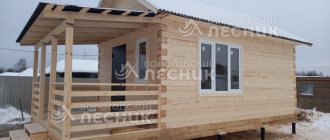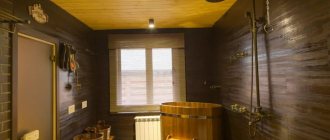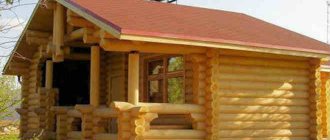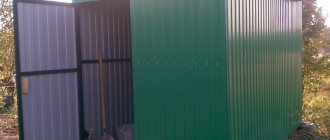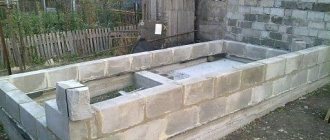Winter is in no hurry to end, which means that the bathing season is in full swing. Traditional Russian, Finnish and other Turkish-Roman baths, saunas and thermal baths are everywhere filled with people who want to hide from the cold and filth in clouds of hot steam.
But often lovers of bath procedures do it completely illiterately, so the editors of Disgusting Men have compiled a list of seven simple rules for visiting a bath in winter - in order to sweat and not die.
First there will be two obvious points, but, as in the situation with safety rules in production, it would not be superfluous to mention them again - just to be sure:
The benefits of a bath in winter
But perhaps it’s worth starting with a non-construction question: what is the special benefit of a bathhouse in winter? After all, if it’s not there, then what’s the point of lighting the stove? You can wash yourself in the shower, but that’s not why people go to the bathhouse.
Not being doctors, we will simply say that in winter the temperature difference between the steam room and the street is significant, so the contrast for the body and its effect on the blood vessels is also great. But this is provided that you are going to dive into the snow or an ice hole. But are you going? Otherwise, you may not notice the difference between a summer bath and a winter one.
Those who practice rubbing with snow or swimming in an ice hole know that the shaking (especially in the latter case) is very strong. Under the influence of high temperature, the vessels dilated so that the body cooled due to increased blood circulation, and in the cold they sharply narrowed to reduce heat loss.
What is so good about it? First of all - tone. That is, the elasticity of the walls of blood vessels, which determines how well blood flows through the tissues. The appearance of the skin and the condition of the whole body depend on this. Blood brings oxygen and carries away products of metabolism and cell breakdown. Therefore, you promote the nutrition and growth of healthy cells, as well as the cleansing of dead and waste from the body when you improve blood flow.
The heart experiences a shock load during contrast procedures . Those who approach hardening wisely are able to train their heart (it’s a muscle) in such a way that they can significantly reduce the risk of cardiovascular diseases.
ATTENTION! It is reasonable to not heat a bathhouse once a week in the winter at the dacha, but to regularly and consistently engage in hardening, doing it daily at home - starting with dousing with cold water, rubbing with a wet towel, etc. Then the bathhouse will bring maximum benefits.
As for colds, you shouldn’t go to the bathhouse with a full-blown flu. But as a preventative measure, this is a very correct measure. And at the very beginning, if you feel that you have become hypothermic and your nose is already starting to run, the bathhouse will also help not to get sick.
Russian
Shelves in a Russian bath
Actually, everything that was said above can rightfully be applied specifically to the Russian bathhouse in winter. After all, all these snow procedures and diving into ice holes were used by our ancestors. So the Russian bath, with its special temperature and humidity, is very suitable for making a person healthier .
True, if you do everything according to the rules, then for good light steam you will have to spend the whole day worrying about the stove. In order for the stones to heat up to 400 degrees, the stove must be either brick, or in a good casing made of stone or brick. This will not overheat the steam room while the stones are heated in a closed heater. But it will take several hours to kindle it as a matter of course, especially in winter, when the frozen mass still needs to be warmed up.
In general, it turns out to be a bath day. But that's good.
Sauna
With a sauna, everything is somehow simpler and faster - and you don’t need much time to prepare it, and you won’t be able to sit in it for a long time if the temperature is around 90 degrees.
As for Russian fun in the snow and in icy water, they are not at all alien to the Finns. These are also northern people, so among them there are those who like to cool off after entering a steam room in fresh snow or diving into an ice hole.
In principle, the sauna rules themselves say that you need to sit in the steam room for 15 minutes and then cool down. And how to do it - whether to take a cool shower, dive into the pool or go outside and dive into a snowdrift or an ice hole - everyone decides for themselves.
Japanese
Winters in Japan are not warm, but don’t put off washing until summer. That's why the Japanese came up with the idea of heating their barrels of water in which they wash themselves. So even in Russia you can safely use ofuro - this very barrel, which can be located both in a warm room and, if desired, on the street .
This is a man-made “geothermal source”. Since there are many of them in Japan, one must think that they served as the prototype for their bathhouse. Although it’s hard to call it a bathhouse. More like taking a bath.
Photo from Wikipedia
They say that because they were unable to use soap for religious reasons, the Japanese began to wash off oil from their skin using hotter water . In principle, this is true - hot water dries the skin because it washes away fat. And since fat absorbs odors, by washing it off even without soap, the Japanese achieved... well, cleanliness acceptable to their culture.
This means that the water in the ofuro barrel is very hot precisely in order not to use soap. So you can try to sit in a Japanese bathhouse in the winter right on the street - the sensations will certainly be memorable. Let us remind you that the stove is built into this barrel ; it heats the water much like a boiler, only without current. So it's impossible to freeze.
In general, we are inclined to consider this more of an exotic entertainment than a bathhouse. At least in Russia. However, this does not mean that such procedures are useless or harmful. The same warming up of the body, only with the help of water, the same temperature contrast at the exits. Why not?
Don't forget about safety
But it is not advisable to install electric heated floors in the steam room itself. Yes, this will make going to the bathhouse more comfortable. After all, true connoisseurs of baths know that it is the floors, especially in winter, that can remain cool even after heating for many hours. All the heat rises, and near the ceiling the temperature can reach 70-80 degrees, but the floors will remain cool. This definitely won’t happen when using electric heated floors - they will heat up much faster than the bathhouse will heat up.
vote
Article rating
Exploitation
When frosts begin, the owner of a bathhouse has certain concerns that cannot be avoided if you do not want to encounter unexpected breakdowns and the need for repairs and restoration.
At the moment we are talking about an unheated bathhouse for periodic use. What does it mean? That in the interval between bath procedures the bath cools down to ambient temperature. And if it’s frosty outside, then the temperature inside is sub-zero. This is what happens if the bathhouse is at the dacha, and in winter you are only there once a week maximum.
This specificity imposes certain restrictions even on the choice of stove. Where there is a brick stove, heating takes about four hours, and in general, bringing a bathhouse with a brick stove out of the red requires slowness and care. Iron reaches acceptable temperatures in about an hour - an hour or so.
Therefore, for modern urban people, iron (metal) stoves without thick casings made of brick or stone are becoming more relevant (decorative stone slats do not count).
If you want to take a steam bath in a Russian bathhouse, but without a brick or cast-iron stove with closed heaters, then the only option is to purchase a steam generator that produces the steam that is characteristic of a Russian bathhouse, superheated to a temperature above 100 degrees, which is called “light.”
The iron stove is heated without much precaution, it is flooded in the usual way. no more than two hours to prepare . Upon completion of the bath procedures, you need to ventilate and dry the bath (see below for how to dry a bath in winter).
It is also necessary to drain the water from the water supply system. In this case, you will avoid problems associated with the expansion of water when it turns into a solid state - ice easily tears pipes, toilets, siphons, and in general creates problems that can be easily avoided if you do not give it a chance to form. We also talk about how to do this below.
Living in a bathhouse in winter: is it possible?
A bathhouse is a building in which heating is intended for very specific purposes, namely: to increase the temperature, primarily in the steam room. In addition, this is a building of periodic use, that is, it usually does not provide much of what is needed in a residential building.
In order to live in a bathhouse in winter, it needs to be refurbished to a greater or lesser extent. Since we are talking about the winter period, first of all we need to think about heating.
Using a stove in a steam room every day is not entirely cost-effective. The main heat from it will be in the steam room, the rest have direct heating only if the sides of the stove also face neighboring rooms. Even the firebox brought into the rest room does not provide much heat.
Therefore, it is necessary to either cut the channels and install forced ventilation in them, which will draw hot air from the steam room into adjacent rooms, or install heat exchangers or simply water tanks, but with the goal of using hot water for heating. In this case, installing radiators cannot be avoided.
There is an option! You don’t have to bother with the sauna stove and use an autonomous boiler to heat the water.
Of course, you can get by with a potbelly stove or other heater outside the steam room. But this is more suitable for a temporary place, when you already need to live, but nothing really has been done for this.
Use of a bathhouse with accommodation in winter
But there are also those who immediately build a bathhouse with accommodation. This could be planned as a guest house, for example.
How is this bath different from a regular one? It has additional rooms or dedicated spaces: bedroom, kitchen and toilet. The kitchen, of course, can be an area in the recreation room.
In addition to the amenities in a bathhouse with accommodation in winter, there are always additional heating devices - this can be a boiler, a boiler that heats water for water heating, these can be electric heaters of various modifications - oil, infrared, etc. Stoves or fireplaces for rooms outside the steam room can also be pre-installed.
There are many options, and they can still be combined in some way if desired.
Since the residential bathhouse is constantly heated in cold weather, the water in it is not drained (although the possibility should be provided for in it), but the need for drying is not canceled. Although in this case, drying occurs in any case, even if everything necessary is not done right away - simply due to the constant positive temperature (it’s like in an apartment with a bathroom).
Read the bath spirits
This point concerns those who like to take a steam bath in a village bathhouse with local residents. For most urban customs associated with spirits, this is something from the dark Middle Ages, but for many people of the older generation it is part of everyday life, a ritual of unity with the world of spirits. Previously, the bathhouse was a truly esoteric place - the dead were washed there and memorial rites were often performed.
If someone offers you to put a glass of water, milk or vodka in the corner of the bathhouse, or tells you to read a prayer to calm a violent bathhouse, do it and do not mock - this way you will come into contact with folklore and establish contact with others much faster. However, it is possible that you are simply being teased.
Barrel sauna
One of the bathhouse options on the site is a barrel bathhouse. This is a fairly compact and mobile structure that is not firmly connected to the foundation (often it is not made at all, limiting itself to supports on the ground). That is, a barrel sauna can be transported if necessary, or even made into a mobile sauna on a trailer. See the article about cedar barrel saunas.
Barrel sauna made of Altai cedar. Photo BanBochka
However, there are many questions regarding how a barrel sauna behaves in winter. Let's consider them sequentially.
Barrel sauna in winter: pros and cons
Of course, every thing has both advantages and disadvantages. But in order to make an informed choice, you need to know both, and weigh which is more significant.
The pros and cons of a barrel sauna in winter stem from its design and purpose. Firstly, the barrel shape was chosen by the Finns, who created it to make the ceiling vaulted - this has a beneficial effect on the distribution of hot air from the stove, which, spreading over the vault, slides down, evenly heating the space.
For winter, this design is definitely a plus, because it provides quick and high-quality heating of the air.
Small dimensions are good not only for mobility, but also for the same warm-up speed: the smaller the steam room, the easier it is to heat it. And since the Finns designed the sauna, the main thing is that a seated person can fit comfortably.
Well, from what was said above, it follows that there cannot be a real Russian bathhouse in a barrel. However, we note that a steam generator could help here too. And so - this is precisely a sauna with a small iron stove, providing a regime that is often called “dry air”.
It is clear that the design and dimensions of the barrel are a plus, but this is a sauna. Cons... Well, many disadvantages come out when the company does something wrong. You need to understand that a wooden barrel on a screed with clamps changes its dimensions, and how it will behave depends the quality of the clamps The owner is required to tighten and release, but it happens that the tree simply breaks the clamps, you need to immediately install it more firmly.
It happens that the ventilation is done crookedly, it happens that the stove is poorly insulated (we are talking about the chimney and the distance to the wood) and creates a fire hazard. There are many different jambs - depending on your luck with the company. Everything needs to be checked and understood why.
A common problem is rotting wood under windows and wherever water accumulates after precipitation. This can be solved either by installing the bathhouse under a canopy (the Finns most often do this) or by canopies covering the ends.
Bath-barrel made of cedar. Photo BanBochka
RESULT: the barrel sauna is structurally good in winter, but it must be made with high quality and needs some protection from moisture inside and outside.
Bathhouse-barrel, insulated
Another important question: does a barrel sauna have to be insulated for winter?
Let's start again with the design. Barrels can be single-layer, consisting only of a frame and insulated, with a “pie”, where there is an outer frame, insulation and inner lining.
At first glance, insulation is mandatory for particularly frosty areas. But it is not so. In reality, a small barrel made of a single-layer frame can easily warm up acceptably only through the stove and keep warm throughout the entire time of the bath procedures.
Oval barrel sauna made of cedar with a capacity of 4 people, the mode supported is a Finnish sauna. Photo BanBochka
Why is that? The principle is the same as for steaming in a mobile sauna made of fabric or film - the main thing is to create an obstacle to hot air , and then maintain its formation. And everything will hold out fine.
IMPORTANT! Everything is valid as long as the stove is working and the stones in the heater are not cold.
But why then do we need insulated options? Oddly enough, the main reason for their appearance is the material from which these barrels are made. If they are used with cheap pine or fir, then the single-layer one will cry with resin. And if you insulate the coniferous wood with the same mineral wool, and line the inside with hardwood - linden or aspen, then you get a bathhouse that is cheap to manufacture and without problems with resin.
Operation of barrels
We have already said above that for stable operation of a barrel sauna in winter, you need to take care of protecting it from the outside - a canopy or canopies, as well as clearing snow and preventing water from accumulating at the bottom of the ends.
It can also help to treat at least problem areas with antiseptics that prevent rotting (only from the outside!).
You also need to take care of drying the inside. Baths that do not have proper ventilation are especially affected. Usually holes are made and plugs are placed on them. It happens that they forget to do it. If there are none, or few, or they are small, then do forced ventilation - place fans in the ducts. You can also arrange burst ventilation - open windows and doors wide.
ADVICE! It is better to drain water from the bathhouse through a pipe to the sewer or septic tank.
If you have water installed in the bathhouse, then after the procedures you need to drain it completely from the system if the air temperature is already or promises to be 0 degrees or lower.
Polycarbonate bath
An original way to reduce the cost of building a bathhouse is to use an existing polycarbonate greenhouse or build a new one, with the expectation that there will be a bathhouse in it.
There is no doubt that such a bathhouse will be a good summer option. But what happens to a polycarbonate bathhouse in winter?
We invite you to watch two videos by the same author - in the first he demonstrates his bathhouse in the summer, in the second - in the winter. According to him, it functions perfectly at a temperature of minus 10 degrees, even if the wind is blowing at this time. Well, at least in this frost everything is fine and you can steam. We think that those who experience more severe frosts should contact the author and ask him how things stand in this case.
Summer video on Odnoklassniki
As for the properties of polycarbonate itself, it can withstand temperatures down to minus 40 degrees, but in the cold it becomes brittle. The upper limit for it is 120 degrees Celsius. That is, the chimney must be very well insulated from polycarbonate. In addition, it is worth taking care of the spark arrestor at the end of the chimney pipe.
Mobile sauna
There are several types of baths. Stationary ones stand on a foundation and do not involve any movement. Mobile ones are simply movable, that is, they are not tied to any foundation and can be transported from one site to another, for example, when moving. If such a bathhouse is loaded onto a trailer and taken out into the countryside, then it automatically becomes a camping one.
But of camp baths. This can be not only a barrel sauna, but also a tent equipped with a stove inside, as well as a frame sauna made of plastic film. The latter may have a collapsible frame or trees will be used instead of a frame.
Tent baths are also varied, but the diversity there is more in the degree of comfort and price. They also differ in the number of people they can accommodate. There are some that can accommodate 8 people and still have room left.
Sogra-3 is installed in a mobile bathhouse. Mobib Photos
In winter, mobile saunas behave excellently, retain heat perfectly inside (we have already clarified that there is either a working stove inside or stones heated by it), you can warm up in them quite quickly, spending about 1-2 hours at the initial stage. But these numbers are not stable; a lot depends on what you warm yourself with - a real stove or a fire with stones.
Travel made of film
The cheapest option for setting up a bathhouse in nature, which also does not require much space in the car, is to fence off the space between several trees with plastic film.
The plastic film should be stretch, but you are free to choose whether it will be cling film or non-food film. The second one is, of course, stronger.
- Everything is done quite simply: choose a place as level as possible, where several trees grow in the “corners” of the future bathhouse.
- Inside this space, choose a place for the fire and lay out the hearth. It is good to use brought bricks. A lattice or something else is installed on the bricks, where stones can be placed.
- Light a fire to heat the stones. In the meantime, while they are warming up, begin to cover the perimeter with film. You will also need a roll of tape.
- Having wrapped the perimeter to the required height, strengthen the bottom, make a door, first strengthening its outline with tape.
- When the fire warms up the stones well and goes out, make a roof from the same film.
The whole process can be clearly seen in this video:
And for those who would like to see how a camp film bathhouse behaves in winter, we recommend this video:
If you are interested in stoves for mobile and camping saunas, check out this article: Review of stoves for camping saunas.
Does a frame bath keep warm?
Frame baths are one of the options for budget construction. Residential buildings are also built using the same technology. Moreover, they began to be built somewhere in the 70s in Canada. And there it’s cold like in Siberia. So you don’t have to worry about the structure itself; it copes well with thermal insulation.
But what exactly did those who asked whether a frame bathhouse keep warm in winter mean? After all, everything depends on the energy source - if the stove is working, if there are stones or brickwork heated by it, then it goes without saying that it will be warm inside. But as soon as the heat transfer stops, the temperature slowly but surely begins to decrease. And this applies not only to the frame, but also to any other material - log houses or brick buildings cool in the same way.
In essence, if there is a heat source inside, the only thing that matters is the tightness - as long as there is no draft, the heat will stay in even inside the enclosed perimeter of cling film!
But different materials transfer heat to the environment at different rates. Since inside the frame there is a layer of insulation - a material with low thermal conductivity, there is nothing to worry about. In addition, many additionally add a layer of foil in the steam room - it is both a vapor barrier and a heat reflector (if there is an air gap after it).
So a well-heated steam room in a frame bath (and even with a layer of foil) will keep the heat well even on a frosty day. Read about frame baths here.
Why do you need additional heating?
Of course, with a very tight budget, you can refuse additional heating, using only the classic option - a good cast-iron or brick stove
A heater stove is the most popular way to heat a sauna.
Additional heating is usually understood as additional heating equipment that allows you to maintain a high temperature not only in the steam room, but also in the dressing room. After all, many bathhouse connoisseurs love to sit with a group of friends in the dressing room after visiting the bathhouse itself to talk about life, remember past times and discuss plans for the future. Unfortunately, when using conventional stoves, it is not possible to heat the dressing room. And if this is not a problem in summer, then in winter it can cause discomfort. Almost all the heat is given to the steam room, as a result of which being in the waiting room for even a few minutes to undress or dress can be unpleasant due to the extremely low temperature. What can we say about gatherings and long conversations!
How to store brooms
By winter, the brooms prepared in the summer have already lost moisture and become dry and brittle. Before the onset of frost, they had to be stored in a dark, dry, ventilated room, such as a barn.
Does anything change with the onset of winter? Nothing. By the time frosts arrive, there will be very little moisture left in the brooms, so there is no need to be afraid of them freezing. The moisture that tears the cells apart when frozen is no longer there.
You can safely continue to store bathhouse brooms in the winter in the room that was previously allocated for them.
Let us remind you that you should not choose it under a modern roof if you yourself feel sick from the heat under it on a summer day. It's good to hang brooms in the barn. The garage is not suitable, because we don’t want organic chemicals, which are full of them in the garage, to be absorbed by a broom?
Another optimal hanging storage option is a dressing room or other dry bath room.
In a house where approximately the same temperature is maintained, without changes, as well as stable humidity, it is enough to choose a dark place. This could be a closet, or it could just be cardboard boxes with holes for ventilation, folded where it is convenient for you.
How to store birch brooms
In principle, it is quite difficult to say anything new (compared to what was said above) about how to store birch brooms for a bath in winter. We understand that we are talking about mass storage, not about one or two brooms, so just for information, let’s say that a quick freezer is also an option for storing birch brooms (and all others too).
When quickly frozen, ice crystals do not form and tear the cells, so the brooms are preserved in their original form. However, at home there is unlikely to be an empty large chamber that you wouldn’t mind giving under brooms. But cellars and basements, which are just asking for storage for brooms - they are usually more humid there than necessary.
Alternatively, you can wrap the brooms in dry straw or paper - this will help to preserve them better.
Connecting destinies
Village soap shops also served as a special place for weddings. Actually, baths of this kind can be divided into two large groups: a wedding bath for the bride in her father’s house and a joint bath for the newlyweds on the second day of the wedding.
Wedding bath
For the bride, this bathhouse served as a farewell to her native nest. Especially for her, the room was scraped clean, decorated with flowers and wreaths, and covered with fragrant herbs. The solemn procession of the campaign was led by the bride's brother; in the absence of one, in some places of the Russian North he was successfully replaced by a village sorcerer, surrounded by a fishing net.
Here the ritual unbraiding of the braid took place, symbolizing farewell to girlhood.
Bathhouse for newlyweds
It is a mandatory ritual and in the old days, ignoring this procedure caused active public condemnation.
The bathhouse for the newlyweds was heated in the groom's house by a groomsman; in some areas, a matchmaker was allowed to participate in this procedure.
Naturally, the village bathhouse was richly decorated and cleaned for such a special occasion. During the steaming procedure, guests sat around the room tapping cast iron and frying pans, thus scaring away unclean and evil spirits. Very often, after the newlyweds, the guests also tried the bathhouse, and what is important, also in pairs - a man and a woman. The young wife always takes an embroidered towel as a gift to the bathhouse in order to appease him and enlist support and protection during future childbirth.
How much firewood do you need for the winter?
In fact, calculating how much firewood is needed for a bathhouse in the winter depends on a couple of individual parameters, so it’s easier to describe the algorithm, and then do the math for your own case.
So, prepare according to how many times you plan to heat the bathhouse during the winter. If every week, then that’s 4 times a month.
Everyone's stove is different, so it would be good to know how much wood usually goes into heating the stove and maintaining the temperature.
IMPORTANT! In winter, the amount of firewood can be approximately doubled compared to summer heating.
This is what you start from - the approximate amount that goes away in the summer at a time, multiplied by two, and then multiplied again by the number of fires per season. Add another 10-15% to this amount and you will have a supply for the winter.
If you don’t know how often you will heat, take the maximum possible number.
How to make a sauna in winter
“Make” is a flexible concept. This may include construction and specific measures to maintain the bathhouse in the winter. The main thing, in our opinion (besides heating), will be the question of the correct design and maintenance of the water supply system. We recommend reading a large article on this topic, which discusses all the options for supplying water to the bathhouse and how to protect communications from freezing and pipe ruptures.
Layout features
Construction and design of a bathhouse is a serious job that requires craftsmen to have skills in working with timber, processing tools, and concrete. General recommendations for the construction of such premises are:
- when arranging a room, only high-quality thick timber should be used;
- when planning, an intermediate room between the street and the bathhouse itself should be included in the diagram;
- walls should not be wet;
- drafts are the main enemies of a bathhouse in the cold season;
- the height of the door to the steam room should consist of the length of the door leaf and frame bars;
- The finished door leaf must dry for at least three days.
Construction in winter
There is a difference when to build. If you are going to make a strip or slab foundation, it is better to do it in the warm season.
There are also restrictions on building a bathhouse in winter from certain materials; in particular, it is not recommended to build at this time of year from block material - brick or foam concrete blocks.
The reason is that it is inconvenient to lay cement mortar in the cold, and the consequences will be sad: the water will harden already at zero degrees, and in winter it will stay lower for a long time. If the cement hardens with ice inside, then the ice will melt and voids will remain. The masonry will collapse. In addition, a seam made in the cold does not adhere well to the blocks.
But there are solutions! Builders solve the problem this way: they either add additives to the solution that lower the freezing point of water, or heat the solution, or heat it up, or insert electrodes into the seams, which, when connected to the network, release heat, heating the seams.
Log house
Another wall material is round timber or timber . Log houses are erected at any time of the year, but a log bathhouse built in winter from a winter forest is literally overgrown with legends.
The first legend says that in winter the flow of sap stops and therefore (!) there is less water in tree trunks. Well, that's a half-truth. Sap flow actually stops or slows down greatly. But where do the juices go? Are they really evaporating? No, they remain in the trunk until spring. Winter trunks are heavier than summer ones - precisely due to moisture.
The second legend tells that our ancestors cut down forests in winter precisely because they were more suitable for construction than summer ones. A fact is a fact, but for the peasant it was also of great importance how to remove the wood from the forest - after all, it would be easier to drag a log through the snow than through a summer clearing. And there is less gardening and field work in winter.
ADVICE! Do you want more or less dried logs? Take a moisture measuring device with you and start visiting companies that sell logs. Don't listen to stories about the preparation time, believe only your eyes.
Moisture meter
Is it possible to build a bathhouse in winter from timber?
Yes, you can build a bathhouse from timber in winter . Not to pour the foundation, but to assemble the box.
And again, the reasons for this are not at all that frost dries out the wood. There are certain benefits of a completely different kind in installing a bathhouse in winter. For example, at this time of year it is easier to negotiate with a decent crew , which will be in great demand in the summer.
IMPORTANT! But specialists must be real professionals, because for them working with frozen logs is more difficult than with ordinary ones.
The second important point is that mushrooms sleep in winter like bears. For their development, heat is needed no less than moisture and air. But it will not be possible to properly treat logs with an antiseptic in winter - the tree will not absorb it.
As for insulation , especially inter-crown , there is an opinion that it is not necessary to put it in during the assembly of the box in the winter, because when it melts it will pick up moisture and mold will develop there; instead, it is proposed to stuff tow in the spring.
There is also the practice of temporarily assembling a box for six months, followed by reassembly and installation on the foundation. In six months, the timber apparently has time to undergo some shrinkage. We believe that they are sorting it out just to get rid of moisture between the logs. But this is just a version. If you know the secret of this construction method, share it in the comments.
*** Using a bathhouse in winter may seem labor-intensive to some, but everything is paid off by the benefits of the procedures during a period when we are so susceptible to all sorts of illnesses. But for those who are just planning to make a bathhouse in winter, we advise you to think carefully, although this depends on the frostiness of your climate.
